Brain Tumour
Brain tumours are found in the tissue inside the. A tumour is a mass of normal or abnormal cells that form a new growth or is present at birth (congenital). Tumours occur when genes that regulate cell growth become damaged or mutated, allowing cells to grow and divide out of control. When most normal cells grow old or get damaged, they die, and new cells take their place. Sometimes, this process goes wrong. New cells form when the body doesn’t need them, and old or damaged cells don’t die as they should. The build-up of extra cells often forms a mass of tissue called a growth or tumour.
Depending on its type, a growing tumour can kill healthy cells or disrupt their function. It can move or press on sensitive tissue and block the flow of blood and other fluid, causing pain and inflammation. A tumour can also block the normal flow of electricity in the brain or nerve signalling to and from the brain. Some tumours cause no trouble at all.
Brain tumours are classified as either benign (non-cancerous) or malignant (cancerous). Brain tumours are also classified as either primary (originates in the brain) or metastatic (commence elsewhere and spread to the brain).
TUMOUR GRADES
Benign brain tumours do not contain cancer cells. They are usually considered grades I and II. They can often be removed and seldom grow back. There is usually an obvious border or edge. Cells from benign tumours rarely invade tissues around them. They don’t spread to other parts of the body. However, benign tumours can press on sensitive areas of the brain and cause serious health problems.Unlike benign tumours in most other parts of the body, benign brain tumours are sometimes life threatening. Benign brain tumours may become malignant.
Malignant brain tumours contain cancerous cells. They are usually considered grade IV tumours. They are generally more serious and often are a threat to life.They are likely to grow rapidly and crowd or invade the nearby healthy brain tissue. Cells may break away from malignant brain tumours and spread to other parts of the brain or to the spinal cord. They rarely spread to other parts of the body.
TYPES OF PRIMARY BRAIN TUMOURS
There are many types of primary brain tumours. Primary brain tumours are named according to the type of cells or the part of the brain in which they begin. For example, most primary brain tumours begin in glial cells. This type of tumour is called a glioma.
Among adults, the most common types are:
- Astrocytoma: The tumour arises from star-shaped glial cells called astrocytes. It can be any grade. In adults, an astrocytoma most often arises in the cerebrum. The most common type in adults is a glioblastoma multiforme and is the highest grade of brain tumour.
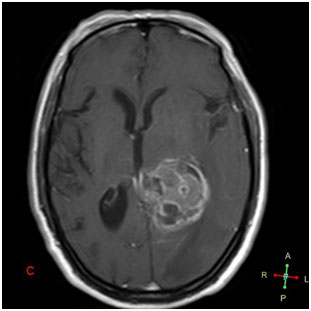
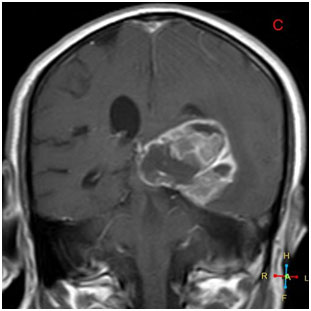
- Meningioma:The tumour arises in the meninges which are the coverings of the brain. It can be grade I, II, or III. It’s usually benign (grade I) and grows slowly.
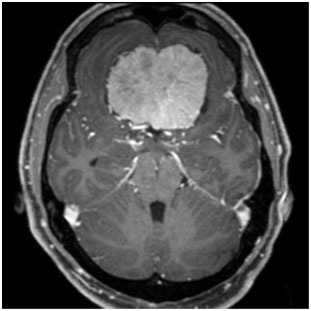
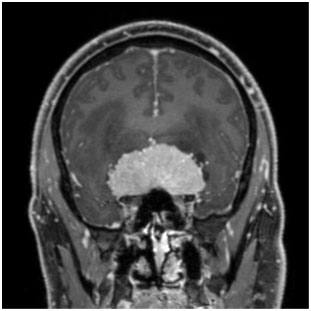
- Oligodendroglioma: The tumour arises from cells that make the fatty substance that covers and protects nerves. It usually occurs in the cerebrum. It’s most common in middle-aged adults. It can be grade II or III.
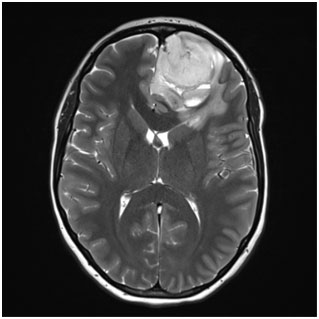
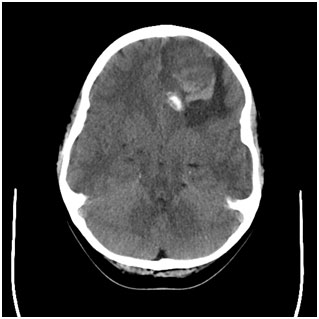
TREATMENT OVERVIEW
People with brain tumours have several treatment options. The options are surgery, radiation therapy, and chemotherapy. Many people get a combination of treatments.
The choice of treatment depends on a number of factors including:
- The type and grade of brain tumour
- Its location in the brain
- Its size
- Your age and general health
Surgery is the usual first treatment for most brain tumours to allow a tissue diagnosis. However, sometimes surgery for complete removal isn’t possible. If the tumour is in the brain stem or certain other areas, the surgeon may not be able to remove the tumour without harming normal brain tissue. People who can’t have surgery for complete removal usually receive radiation therapy or other treatment such as chemotherapy.
Tumour location, size and type are considered when deciding the type of surgery to perform. Surgery to remove a lesion in the brain is called a craniotomy. This is “open” brain surgery requiring removal of part of the skull bone to access the brain tissues.
Minimally invasive brain surgery may also be an option depending on your particular circumstances. Minimally invasive surgery is performed with an endoscope through the nose (endonasal) or through a tiny incision above the eye in order to remove the brain tumour. The endoscope is a special lighted instrument that sends images back to a computer for the surgeon to view internal structures and enables the surgeon to use tiny instruments within the endoscope to remove the tumour.
